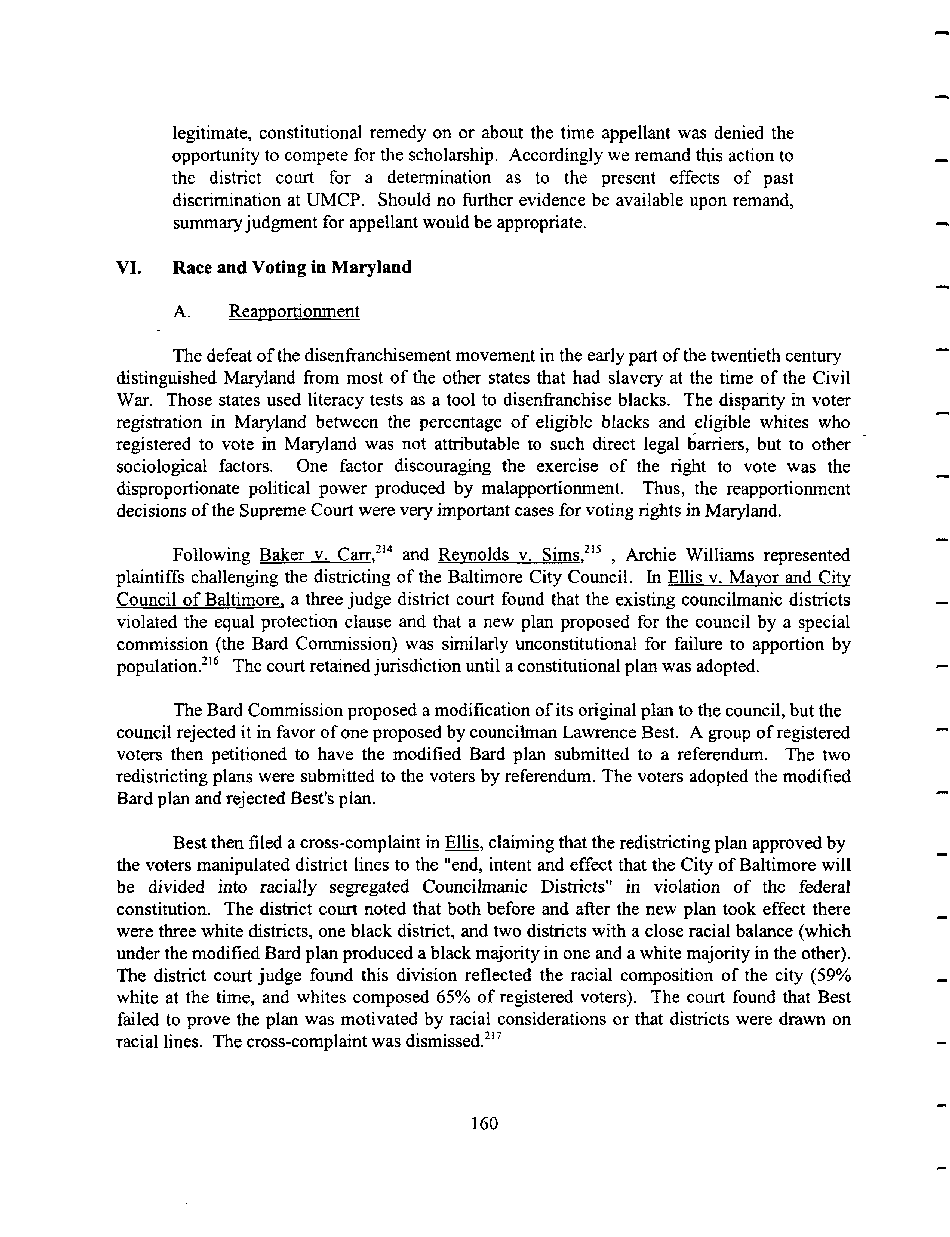|
legitimate, constitutional remedy on or about the time appellant was denied the
opportunity to compete for the scholarship. Accordingly we remand this action to
the district court for a determination as to the present effects of past
discrimination at UMCP. Should no further evidence be available upon remand,
summary judgment for appellant would be appropriate.
VI. Race and Voting in Maryland
A. Reapportionment
The defeat of the disenfranchisement movement in the early part of the twentieth century
distinguished Maryland from most of the other states that had slavery at the time of the Civil
War. Those states used literacy tests as a tool to disenfranchise blacks. The disparity in voter
registration in Maryland between the percentage of eligible blacks and eligible whites who
registered to vote in Maryland was not attributable to such direct legal barriers, but to other
sociological factors. One factor discouraging the exercise of the right to vote was the
disproportionate political power produced by malapportionment. Thus, the reapportionment
decisions of the Supreme Court were very important cases for voting rights in Maryland.
Following Baker v. Cam214 and Reynolds v. Sims.215 , Archie Williams represented
plaintiffs challenging the districting of the Baltimore City Council, hi Ellis v. Mayor and City
Council of Baltimore, a three judge district court found that the existing councilmanic districts
violated the equal protection clause and that a new plan proposed for the council by a special
commission (the Bard Commission) was similarly unconstitutional for failure to apportion by
population.216 The court retained jurisdiction until a constitutional plan was adopted.
The Bard Commission proposed a modification of its original plan to the council, but the
council rejected it in favor of one proposed by councilman Lawrence Best. A group of registered
voters then petitioned to have the modified Bard plan submitted to a referendum. The two
redistricting plans were submitted to the voters by referendum. The voters adopted the modified
Bard plan and rejected Best's plan.
Best then filed a cross-complaint in Ellis, claiming that the redistricting plan approved by
the voters manipulated district lines to the "end, intent and effect that the City of Baltimore will
be divided into racially segregated Councilmanic Districts" in violation of the federal
constitution. The district court noted that both before and after the new plan took effect there
were three white districts, one black district, and two districts with a close racial balance (which
under the modified Bard plan produced a black majority in one and a white majority in the other).
The district court judge found this division reflected the racial composition of the city (59%
white at the time, and whites composed 65% of registered voters). The court found that Best
failed to prove the plan was motivated by racial considerations or that districts were drawn on
racial lines. The cross-complaint was dismissed.217
160
�
|

